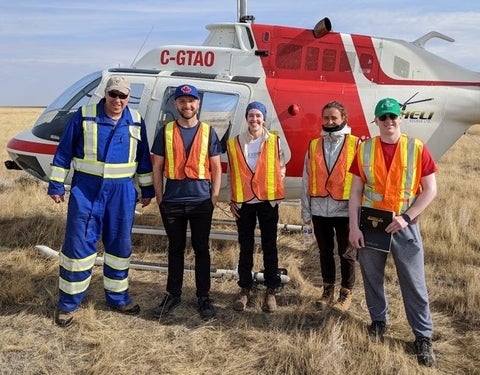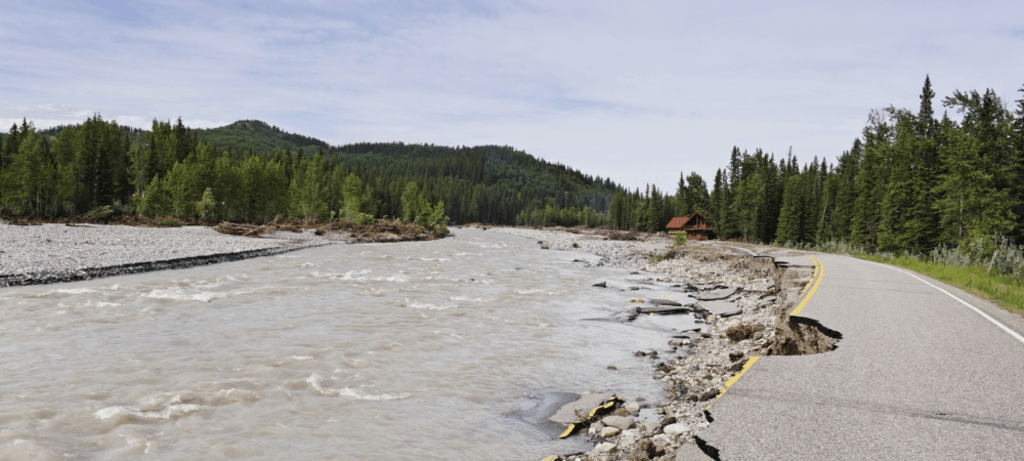Methane researchers team up to tackle climate change
Estimated reading time: 2:40 | Originally posted on Waterloo News
Those spectacular shooting flames associated with oil and gas production aren’t doing a good enough job of protecting the environment.
Known as flares, they play an important role in the reduction of greenhouse gases fueling climate change by converting methane that would otherwise be released into the atmosphere into much less harmful carbon dioxide (CO2).
But recent studies suggest that flares in oil and gas fields are considerably less efficient than previously thought, a discrepancy that could be responsible for additional annual emissions equivalent to those produced by up to 8.8 million cars in the United States alone.

Waterloo researchers with a helicopter used for airborne hyperspectral measurements of methane. From left are Dr. Kyle Daun, Michael Nagorski, Augustine Wigle, Dr. Paule Lapeyre and Daniel Blackmore.
To help tackle that urgent problem, a research team led by Dr. Kyle Daun, an engineering professor at the University of Waterloo and Waterloo Climate Institute member, is working with a sophisticated infrared camera to more accurately measure how well flares convert methane into CO2.
The $650,000 hyperspectral camera - on loan from the Department of National Defence and the only one of its kind in Canada – works by generating thousands of images, each at a different wavelength, to distinguish different gases across a scene.
Deploying the camera for methane measurement is part of FlareNet, a strategic network of the Natural Sciences and Engineering Research Council of Canada involving researchers from five universities and the National Research Council.
“Issues like climate change are inherently multidisciplinary and require experts from different backgrounds to work together,” says Daun. “In the case of FlareNet, we have experts in fluid mechanics, thermal radiation, aerosols and combustion all working together to solve a common problem.”
Better data is crucial to reaching a 2030 target to reduce 2012 methane emission levels in the Canadian oil and gas industry by 75 per cent, part of the country’s climate commitment under the Paris Accord.
Government regulators also need tools to assess whether targets are being met and climate scientists require accurate nationwide methane inventories to model the potential impacts of global warming on climate change.
Interdisciplinary collaboration
In the future, the team hopes to build on the project with the purchase of their own, $1-million camera, and by broadening the multidisciplinary Waterloo collaboration to include other institute members, Dr. Maria Strack from the Faculty of Environment and Dr. Laura Hug of the Faculty of Science, to use the technology for measuring methane emissions at wetlands and landfills.
Wetlands alone account for more methane emissions than all sources created by human activity and they are changing in ways that are difficult to predict.
Daun describes it all as an important team effort in the face of a pressing need – and an opportunity – to make a difference by reducing emissions of methane, which has an environmental impact approaching 100 times greater than CO2 over 20 years.
“Methane has a much shorter lifespan than CO2, so if we stop emitting methane now, we could see an almost immediate benefit,” he says. “I worry what kind of world we’ll leave for our children. If we don’t deal with this while we still can, it could be the failure of our generation.”
Contact us for media inquiries to learn more about this or other climate change related stories.

